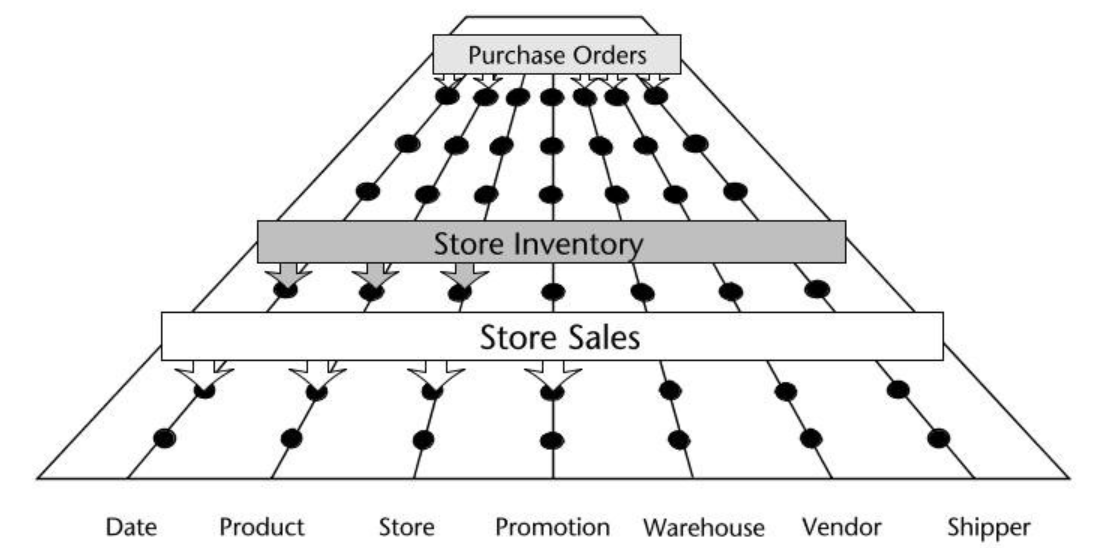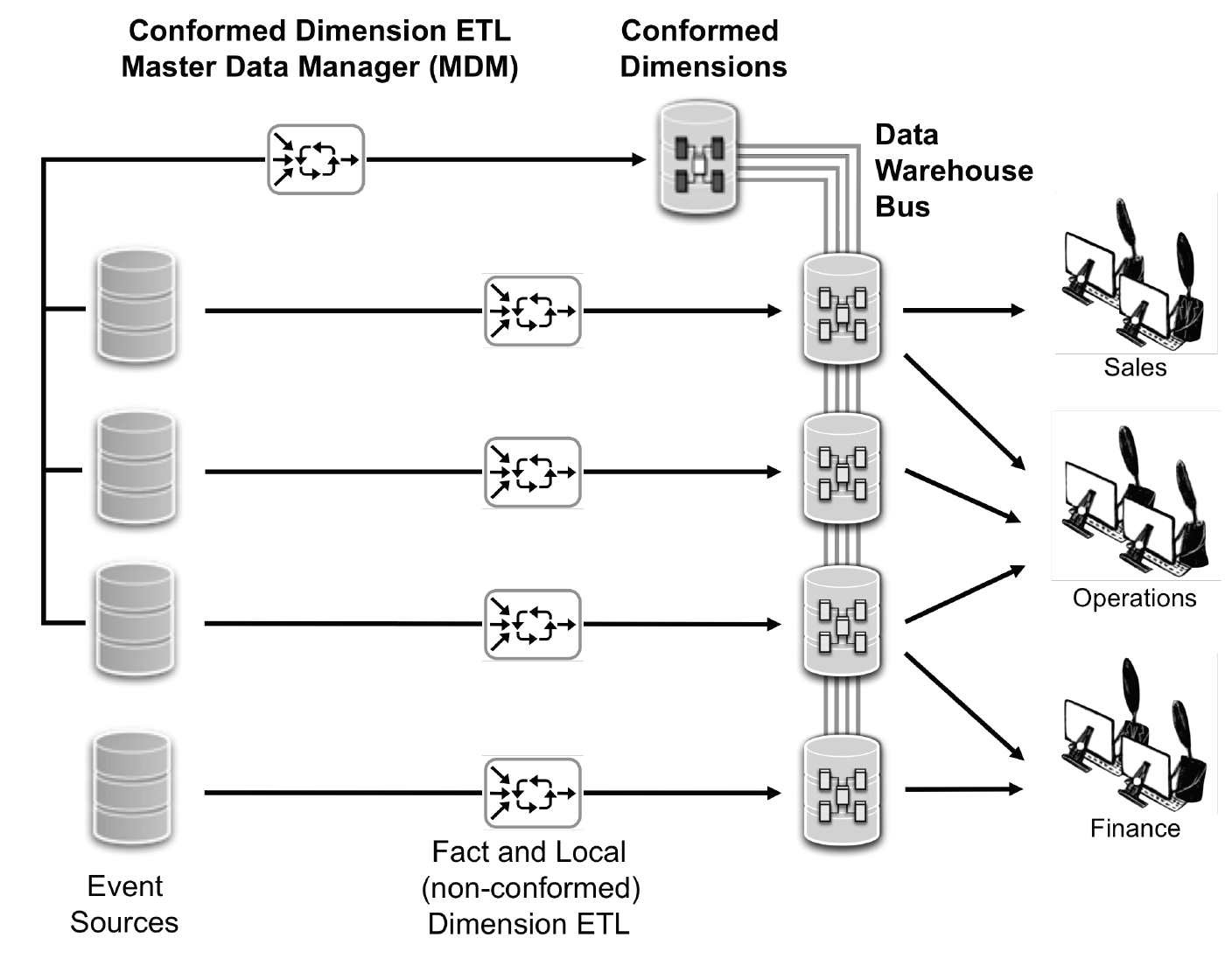Context
In computing, a bus is a mechanism enabling the transmission/sharing of information between several components.
Dimensional modeling is a strategic planning activity in the sense that it is used to model different stakeholders’ needs while maintaining the consistency of data between the different datamarts.
To this end, each datamart, designed on the basis of a star schema, shares some of these conformed dimensions with other datamarts (see the diagram below).

In this diagram, we can see that the business processes for Store Sales and Store Inventory management share three conformed dimensions: Date, Product and Store. This ensures the consistency of analyses comparing inventory and sales, for example.
Bus matrix

The bus matrix provides a global overview of all the data in the decision-support information system. This essential document helps to establish a clear dialog on data with your interlocutors.
Each row of the matrix represents an organizational process that is associated with a datamart. In fact, the datamart is simply a fact table surrounded by its dimensions.
That is why each of the columns in the bus matrix represents the different dimensions present in the system. When a dimension is used by several fact tables, it is said to be conformed.
Reading Bus matrix: Star Schema. Christopher Adamson. pages 100-101
Reading Bus matrix: Agile Data Warehouse Design: Collaborative Dimensional Modeling, from Whiteboard to Star Schema Laurence Corr, and Jim Stagnitto.pages 101-102, 128
Reading Event matrix: Agile Data Warehouse Design: Collaborative Dimensional Modeling, from Whiteboard to Star Schema Laurence Corr, and Jim Stagnitto.pages 102-103
Bus architecture

This diagram shows the data transformation flows in a bus architecture. Each event source undergoes an extraction and transformation in the ETL zone (to which users are denied access as the consistency of the data has not yet been ensured), before finally being loaded into the data warehouse where the data is historized, consolidated and its consistency is ensured, notably by means of conformed dimensions.
Here we can see that a datamart is not reserved for a single department of the organization but meets a global need that can be shared and interpreted in the same manner by different stakeholders in the organization.
Reading Bus architecture: Star Schema. Christopher Adamson. pages 100-104
Reading Bus architecture: Agile Data Warehouse Design: Collaborative Dimensional Modeling, from Whiteboard to Star Schema Laurence Corr, and Jim Stagnitto.pages 100-103, 128